
How to Use AS608: Examples, Pinouts, and Specs
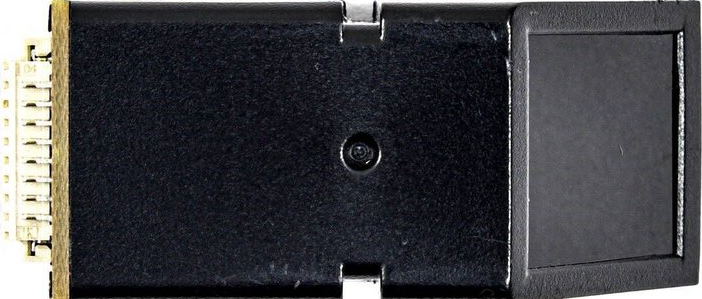
 Design with AS608 in Cirkit Designer
Design with AS608 in Cirkit DesignerIntroduction
The AS608 is a fingerprint sensor module designed for biometric authentication. It captures and stores fingerprint data, and can compare fingerprints for identity verification. This module is widely used in security systems, time attendance systems, and access control systems due to its reliability and ease of integration.
Explore Projects Built with AS608
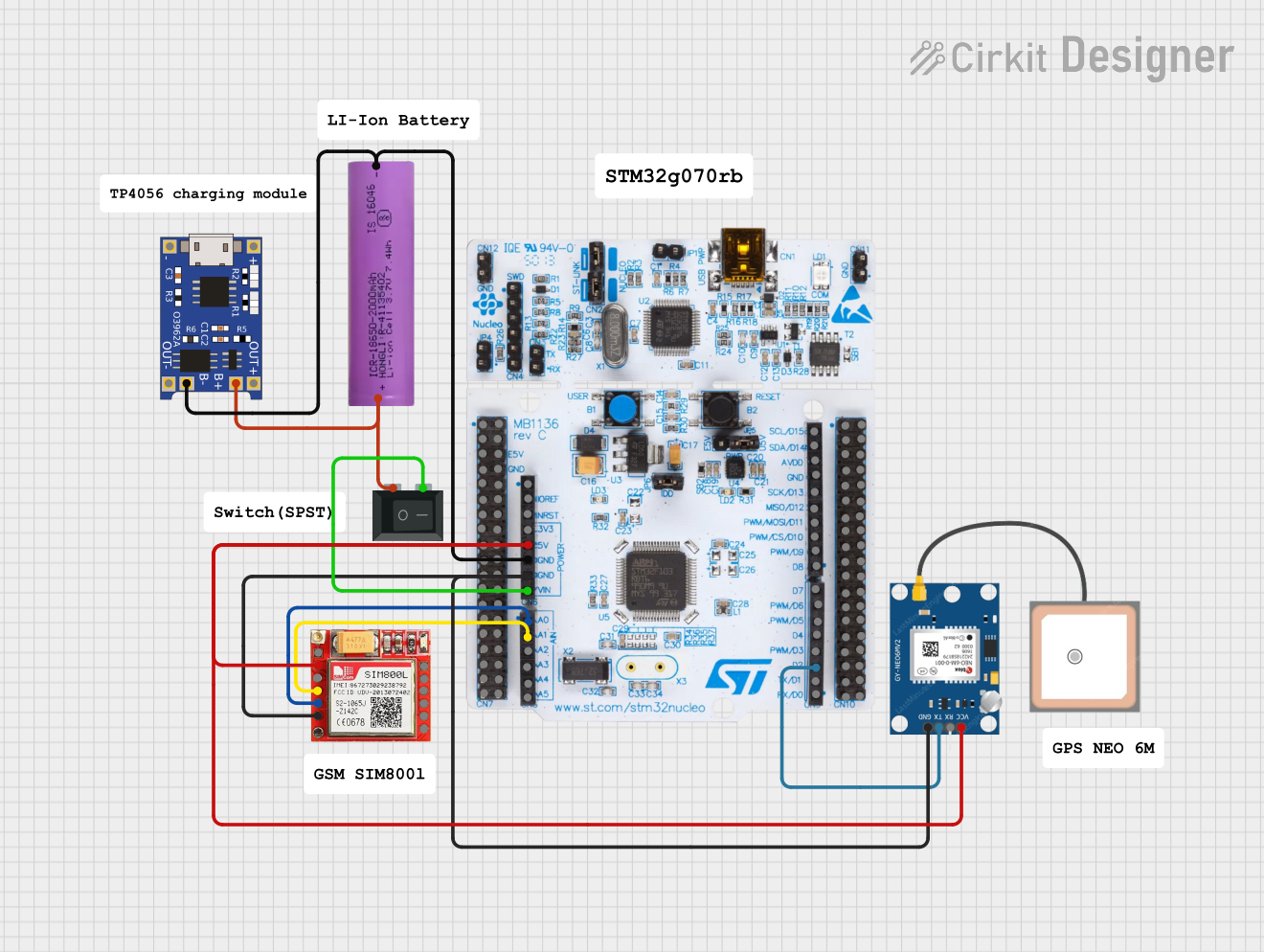
 Open Project in Cirkit Designer
Open Project in Cirkit Designer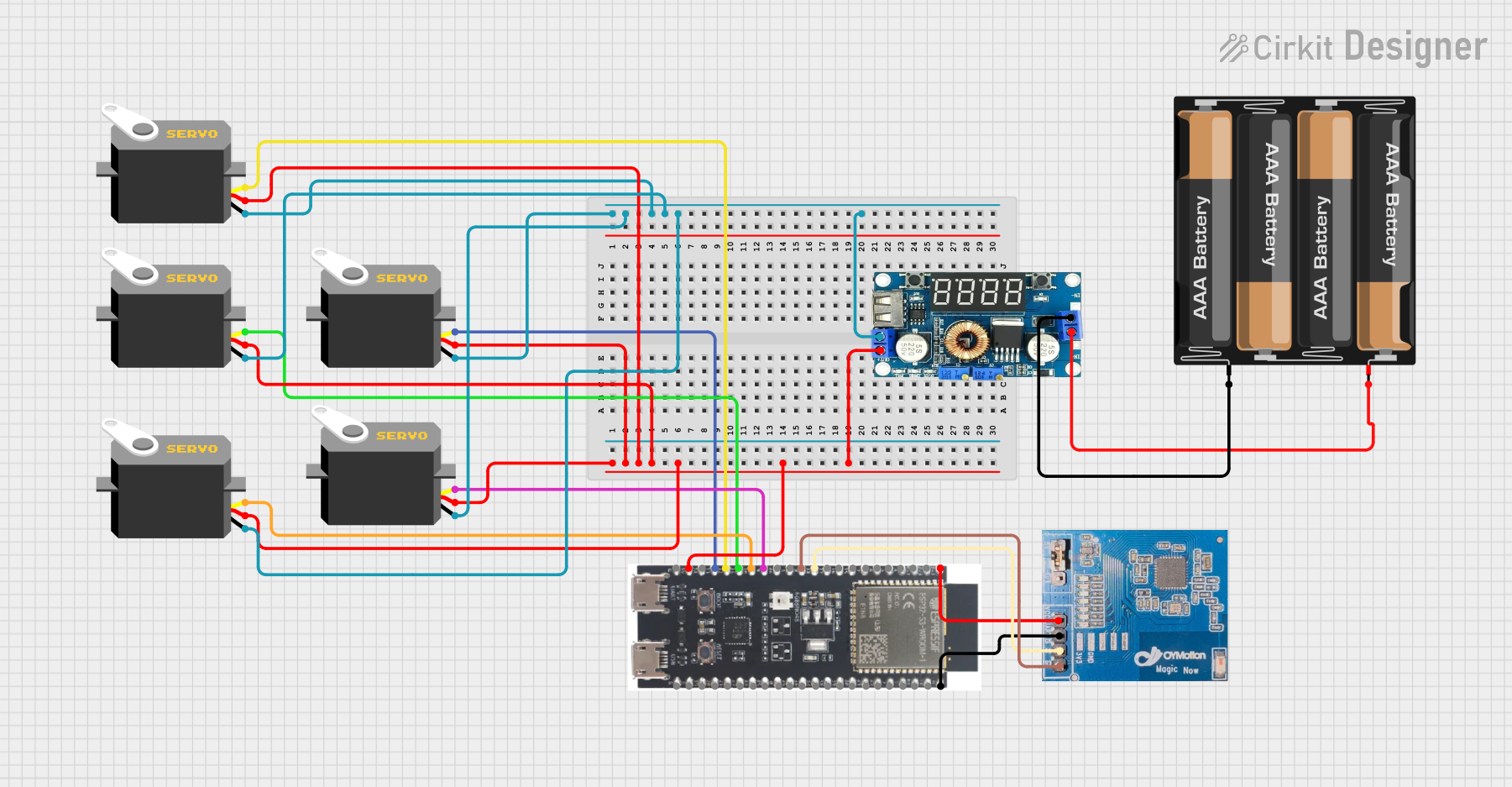
 Open Project in Cirkit Designer
Open Project in Cirkit Designer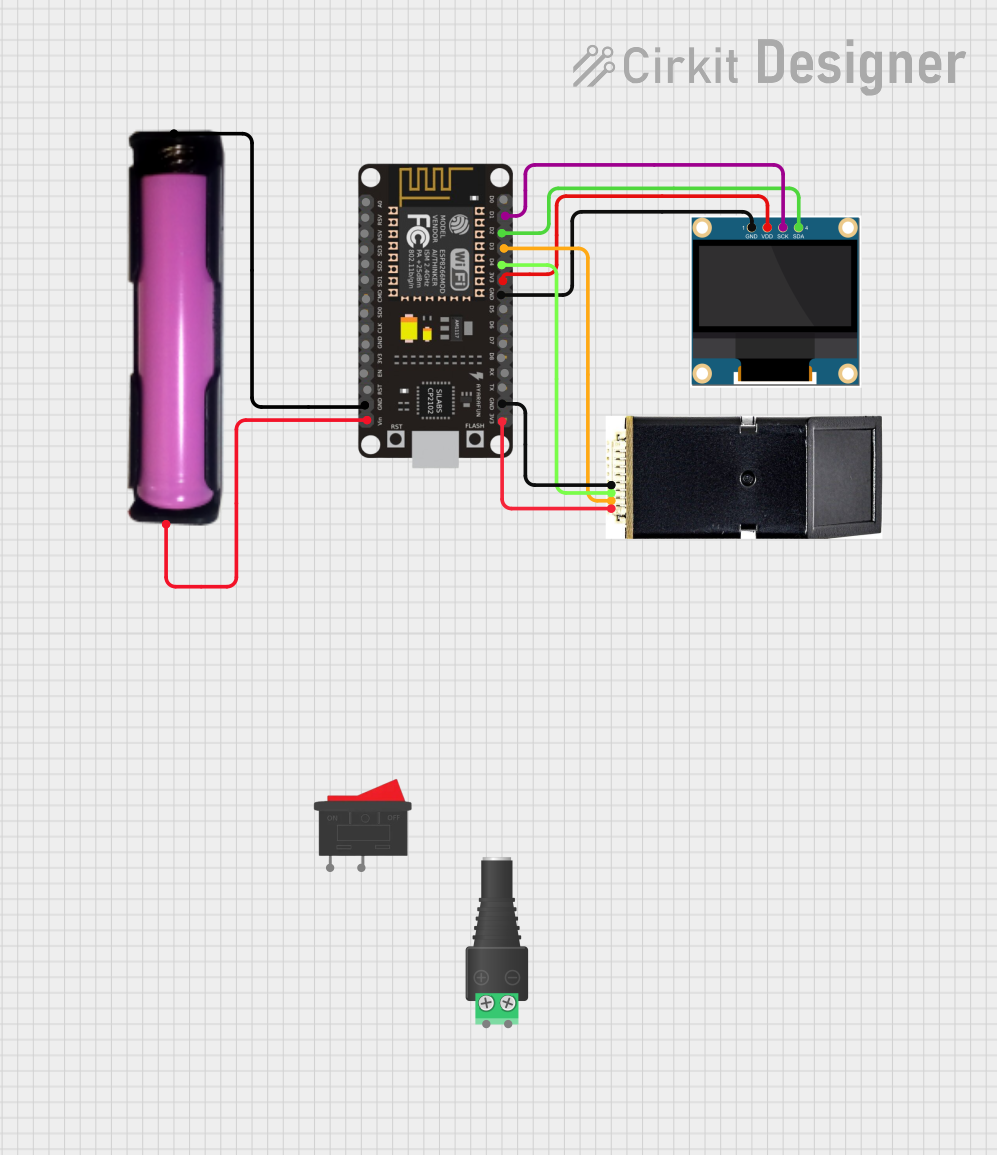
 Open Project in Cirkit Designer
Open Project in Cirkit Designer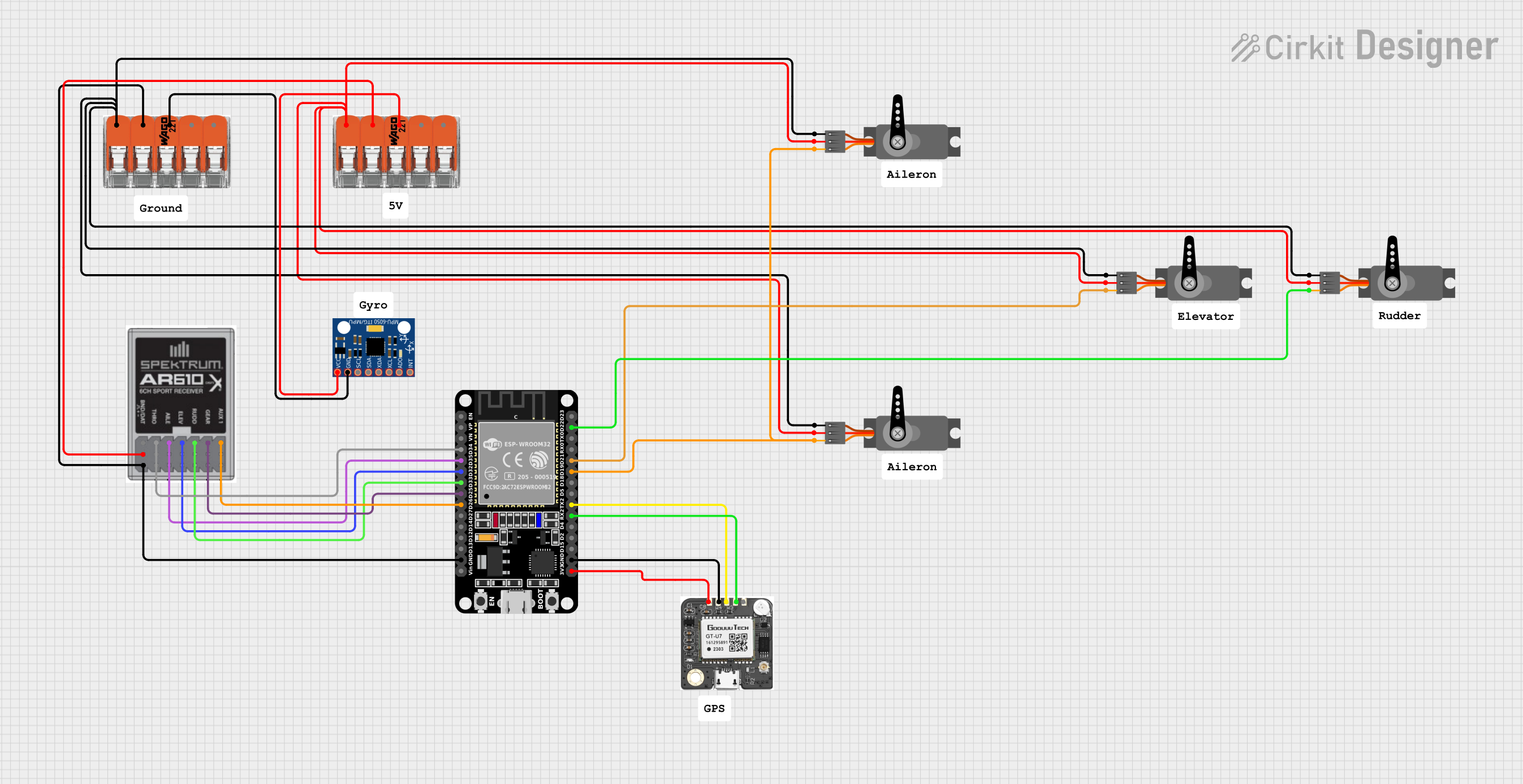
 Open Project in Cirkit Designer
Open Project in Cirkit DesignerExplore Projects Built with AS608

 Open Project in Cirkit Designer
Open Project in Cirkit Designer
 Open Project in Cirkit Designer
Open Project in Cirkit Designer
 Open Project in Cirkit Designer
Open Project in Cirkit Designer
 Open Project in Cirkit Designer
Open Project in Cirkit DesignerTechnical Specifications
Key Technical Details
| Parameter | Value |
|---|---|
| Operating Voltage | 3.6V - 6.0V |
| Operating Current | < 120mA |
| Peak Current | < 150mA |
| Fingerprint Capacity | 162 templates |
| Interface | UART (TTL logic level) |
| Baud Rate | 9600 bps (default) |
| Image Resolution | 508 DPI |
| Working Temperature | -20°C to +50°C |
| Storage Temperature | -40°C to +85°C |
Pin Configuration and Descriptions
| Pin Number | Pin Name | Description |
|---|---|---|
| 1 | VCC | Power Supply (3.6V - 6.0V) |
| 2 | GND | Ground |
| 3 | TX | UART Transmit (Data output) |
| 4 | RX | UART Receive (Data input) |
| 5 | TOUCH | Touch signal output (active low) |
| 6 | 3.3V | 3.3V Power Supply (optional) |
Usage Instructions
How to Use the AS608 in a Circuit
- Power Supply: Connect the VCC pin to a 3.6V - 6.0V power source and the GND pin to the ground.
- UART Communication: Connect the TX pin of the AS608 to the RX pin of your microcontroller (e.g., Arduino UNO), and the RX pin of the AS608 to the TX pin of your microcontroller.
- Touch Signal: The TOUCH pin can be used to detect when a finger is placed on the sensor. This pin goes low when a finger is detected.
- Optional 3.3V Supply: If your system operates at 3.3V, you can use the 3.3V pin instead of VCC.
Important Considerations and Best Practices
- Ensure that the power supply is stable and within the specified range to avoid damage to the sensor.
- Use proper UART communication settings (9600 bps by default) to ensure reliable data transfer.
- Avoid exposing the sensor to extreme temperatures or humidity to maintain its accuracy and longevity.
- Regularly clean the sensor surface to ensure accurate fingerprint capture.
Sample Arduino Code
Below is a sample Arduino code to interface the AS608 fingerprint sensor with an Arduino UNO:
#include <Adafruit_Fingerprint.h>
#include <SoftwareSerial.h>
// Define the pins for SoftwareSerial
SoftwareSerial mySerial(2, 3); // RX, TX
Adafruit_Fingerprint finger = Adafruit_Fingerprint(&mySerial);
void setup() {
Serial.begin(9600);
while (!Serial); // Wait for serial port to connect
delay(100);
Serial.println("Initializing fingerprint sensor...");
finger.begin(57600); // Initialize the sensor with the default baud rate
if (finger.verifyPassword()) {
Serial.println("Sensor found!");
} else {
Serial.println("Sensor not found :(");
while (1) { delay(1); }
}
}
void loop() {
Serial.println("Waiting for valid finger...");
uint8_t id = getFingerprintID();
if (id != -1) {
Serial.print("Fingerprint ID: ");
Serial.println(id);
}
delay(1000);
}
uint8_t getFingerprintID() {
uint8_t p = finger.getImage();
switch (p) {
case FINGERPRINT_OK:
Serial.println("Image taken");
break;
case FINGERPRINT_NOFINGER:
Serial.println("No finger detected");
return -1;
case FINGERPRINT_PACKETRECIEVEERR:
Serial.println("Communication error");
return -1;
case FINGERPRINT_IMAGEFAIL:
Serial.println("Imaging error");
return -1;
default:
Serial.println("Unknown error");
return -1;
}
p = finger.image2Tz();
switch (p) {
case FINGERPRINT_OK:
Serial.println("Image converted");
break;
case FINGERPRINT_IMAGEMESS:
Serial.println("Image too messy");
return -1;
case FINGERPRINT_PACKETRECIEVEERR:
Serial.println("Communication error");
return -1;
case FINGERPRINT_FEATUREFAIL:
Serial.println("Could not find fingerprint features");
return -1;
case FINGERPRINT_INVALIDIMAGE:
Serial.println("Could not find fingerprint features");
return -1;
default:
Serial.println("Unknown error");
return -1;
}
p = finger.fingerFastSearch();
if (p == FINGERPRINT_OK) {
Serial.println("Fingerprint matched");
return finger.fingerID;
} else if (p == FINGERPRINT_PACKETRECIEVEERR) {
Serial.println("Communication error");
return -1;
} else if (p == FINGERPRINT_NOTFOUND) {
Serial.println("Fingerprint not found");
return -1;
} else {
Serial.println("Unknown error");
return -1;
}
}
Troubleshooting and FAQs
Common Issues and Solutions
Sensor Not Detected:
- Solution: Ensure that the power supply is within the specified range and that the connections are secure. Verify the UART communication settings.
Fingerprint Not Recognized:
- Solution: Clean the sensor surface and ensure that the finger is placed correctly. Re-enroll the fingerprint if necessary.
Communication Errors:
- Solution: Check the UART connections and ensure that the baud rate is correctly set. Use a stable power supply to avoid voltage fluctuations.
FAQs
Q1: Can the AS608 store multiple fingerprints?
- Yes, the AS608 can store up to 162 fingerprint templates.
Q2: What is the default baud rate for UART communication?
- The default baud rate is 9600 bps.
Q3: Can the AS608 be used with a 3.3V system?
- Yes, the AS608 can be powered using the 3.3V pin if your system operates at 3.3V.
Q4: How do I clean the sensor surface?
- Use a soft, lint-free cloth to gently wipe the sensor surface. Avoid using harsh chemicals or abrasive materials.
This documentation provides a comprehensive guide to using the AS608 fingerprint sensor module. By following the instructions and best practices outlined, users can effectively integrate this module into their projects for reliable biometric authentication.